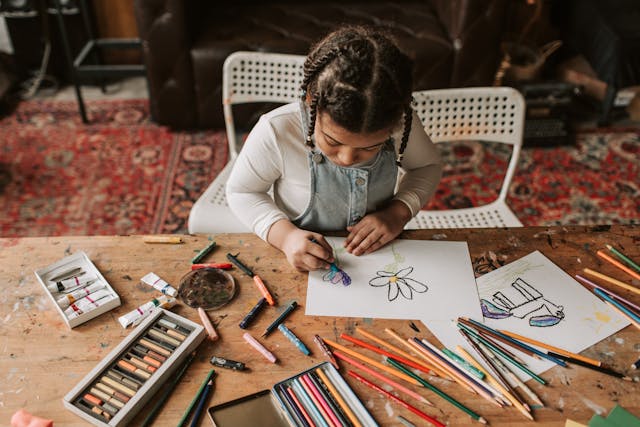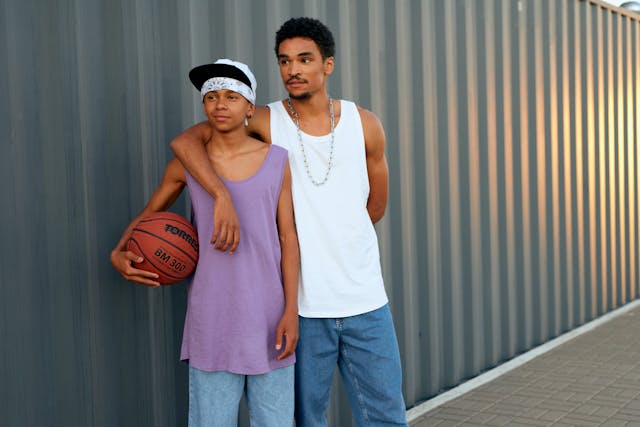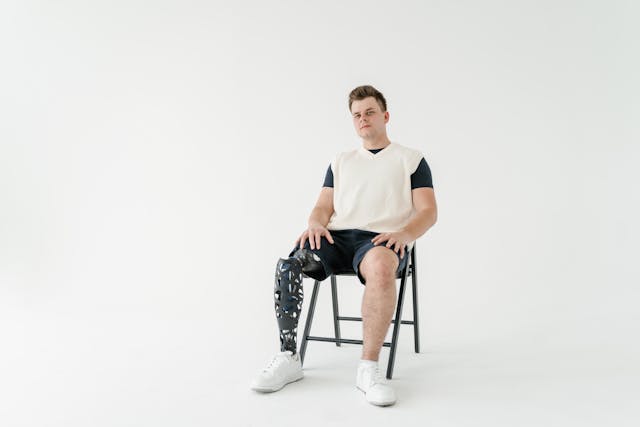When a child is born with a limb difference or experiences limb loss early in life, their needs go beyond a single prosthetic device. What works today may not work a year from now. A child’s body changes quickly, and so do their abilities, emotions, and daily routines. This is why pediatric prosthetic design must always evolve with growth. It’s not just about making a smaller version of an adult limb. It’s about creating something flexible, functional, and empowering at every stage of a child’s development.
At Robobionics, we specialize in building prosthetic solutions that grow with the child. Our design approach focuses on comfort, adaptability, and long-term use. We believe that a child’s prosthetic journey should be smooth, supported, and built on real understanding—not just measurement. In this article, we’ll walk through how pediatric prosthetics change over time, and how each phase of growth comes with its own set of needs and milestones.
Designing for Infants and Toddlers: Comfort and Early Adaptation
The first years of a child’s life are all about movement, discovery, and development. For children with limb differences, this is the stage when they begin learning how to move, balance, and interact with their environment. A prosthetic at this stage is not meant to do everything—it’s designed to introduce the child to wearing and using something new in a gentle and positive way.
Lightweight Designs for Gentle Introduction

Infants and toddlers have smaller bodies and delicate skin. At this stage, any prosthetic must be extremely lightweight and soft. The goal is not high functionality. It’s about getting the child used to the feel of a prosthetic and helping them use it for balance or basic interaction. Even a passive limb at this stage can help with crawling, standing, or reaching for toys.
The design focuses on comfort. Materials must be breathable and gentle. Straps or suspension systems need to be easy to adjust, and the socket must avoid pressure points. These early devices act as stepping stones, helping the child learn that a prosthetic can be a helpful part of their body, not something foreign or uncomfortable.
At Robobionics, we create toddler-friendly designs that can be worn for short periods each day. We slowly increase wear time based on how the child responds, always working with therapists and parents to monitor comfort and acceptance.
Encouraging Natural Movement and Play
At this age, children learn through play. That’s why the prosthetic must never interfere with movement or exploration. In fact, it should encourage it. Designs are shaped to support crawling, sitting, and early walking. The prosthetic must allow freedom of motion while providing enough structure to help the child move more symmetrically.
Children at this age are often unaware of their difference. They explore naturally, and the prosthetic should be part of that experience—not a distraction. By introducing the device during play and keeping the mood positive, we help the child develop healthy early habits of use.
Robobionics focuses on designing prosthetics that support balance and symmetrical development. Our goal is to keep the child active and confident, even at this very young stage.
Preparing for Rapid Physical Growth
The challenge with prosthetics for toddlers is that growth happens fast. A limb that fits in January might feel tight by May. That’s why designs for this stage must include some flexibility for growth. While regular checkups are still necessary, the right materials and structure can extend the life of the device for a few extra months.
Sockets should be easy to adjust or reline, and components must be durable yet replaceable. Most importantly, parents need to feel confident in spotting signs that the fit is changing—redness, slipping, or discomfort during use.
At Robobionics, we offer modular parts that are designed to grow with the child. This helps families avoid frequent full replacements and ensures that the child always has a device that feels right.
Supporting Preschool and Early School Age: Function and Familiarity

As children enter preschool and early school years, they become more active, more social, and more curious. This is the time when prosthetic design shifts from gentle introduction to functional support. Children want to use their hands or legs to participate in play, write, carry objects, or run on the playground. The prosthetic must help—not hinder—these experiences.
Strengthening Prosthetic Control
By age four to seven, many children are ready to begin using a functional prosthetic if they haven’t already. This could be a body-powered hand or a basic myoelectric device, depending on their needs and comfort. At this stage, the prosthetic must respond well to the child’s movements while being easy to wear for longer periods of time.
The design must consider growing strength, improved balance, and faster movement. Control systems must be simple to operate, with switches or harnesses that don’t require too much effort. The device must support basic daily tasks like holding crayons, climbing steps, or feeding themselves.
Robobionics builds control systems that are child-friendly. Our Grippy™ hand, for example, is designed to respond to small, natural muscle signals and comes with easy-to-understand training games to help kids learn faster.
Personalizing for Social Comfort
Children at this age begin noticing differences. They become more aware of how others see them, and their prosthetic becomes part of their social identity. This makes personalization important. A prosthetic that looks cool, fun, or matches their favorite colors helps them feel proud to wear it.
Whether it’s colorful straps, printed designs, or cartoon-themed covers, the design can shift from purely medical to something expressive. When children feel like their prosthetic is theirs—not just something they have to wear—they use it more and speak about it with confidence.
At Robobionics, we offer customization options that let children choose how their prosthetic looks. We believe expression and self-esteem go hand in hand.
Planning for Classroom and Play Needs
Preschool and early school bring new demands—sitting at desks, using tools, taking part in team activities. The prosthetic must support these routines. This means the design should allow for both gross and fine motor tasks. It must also be durable enough to handle the wear and tear of everyday use.
We work with families and teachers to ensure the prosthetic fits into school life easily. We help with grip attachments for pencils, support options for backpacks, and sports-ready designs when needed. The goal is to make sure the prosthetic enhances learning and play—not complicate it.
Adapting to Late Childhood: Function, Strength, and Exploration

By the time a child enters late childhood, usually between ages eight and twelve, they begin to develop a clearer understanding of their body, their prosthetic, and what they can do. Their physical strength improves, their confidence grows, and they begin to test limits—not just because they have to, but because they want to. Prosthetic design at this stage must respond to this sense of curiosity and ambition, offering more function and flexibility.
Improving Control and Strength-Based Features
As muscles develop and coordination improves, children are able to handle more complex prosthetic functions. This could mean advanced grip patterns, better joint movement, or stronger support for running and jumping. Prosthetic components must evolve to match the child’s growing strength and activity levels without sacrificing comfort.
Devices must also be tough enough to handle the demands of sports, playgrounds, and hobbies. Whether it’s cycling, climbing, or even music and art, the prosthetic needs to function across a wide range of activities. Each new skill adds confidence—and each challenge overcome builds independence.
At Robobionics, we engineer prosthetics with durable, kid-friendly materials and movement-friendly designs. Our team ensures that every child gets a solution that matches their pace, strength, and energy.
Supporting Skill-Based Learning and Hobbies
During late childhood, kids start to discover their talents and interests. They may enjoy painting, dancing, typing, or playing musical instruments. A good prosthetic should adapt to these interests. Some may need fine motor precision, while others need strength and endurance.
This stage is also when some children request multiple attachments or interchangeable parts. Having different prosthetic tools for different tasks becomes a practical solution. From stylus tips for touchscreen use to sports hands or feet, each tool plays a role in helping the child express themselves fully.
Robobionics offers modular designs with easy-to-change components. We work closely with families to ensure children can follow their passions without compromise.
Preparing for Emotional Shifts
At this stage, children also begin to compare themselves to others more deeply. They may become self-conscious or ask more questions about their difference. Peer opinions start to matter more. This can be a delicate time emotionally, especially when they transition to larger schools or new environments.
The prosthetic must support confidence. It should be reliable, comfortable, and aligned with the child’s identity. A device that doesn’t work well can be a daily source of frustration. But one that fits well and supports their goals can become a source of pride.
At Robobionics, we listen to the emotional needs of each child. Our designs reflect who they are becoming—not just what they need physically, but what they want to express about themselves.
Transitioning Through Adolescence: Identity and Independence

Teenage years are filled with transition. Physically, emotionally, and socially, adolescents begin to form their own identity and seek more control over their decisions. For a teen with a prosthetic, this stage becomes less about learning how to use the device and more about choosing when and why to use it. Their needs shift from basic function to lifestyle fit and self-expression.
Offering More Advanced Control Options
Teenagers often want prosthetics that do more—especially if they’ve been using simpler models throughout childhood. They may want myoelectric hands that mimic natural movement, or prosthetic legs that allow for running, biking, or strength training. This is the stage when advanced technology becomes more relevant.
Devices must be sophisticated but easy to maintain. Teens are often more independent, but they still need quick access to repairs and adjustments. Battery-powered models, Bluetooth connectivity, or app-controlled settings can help teens feel in charge of their prosthetic use.
Robobionics provides cutting-edge options like our Grippy™ myoelectric hand, designed with teen users in mind. It’s lightweight, intuitive, and highly functional, making it ideal for this age group.
Supporting Style and Individuality
Teenagers want to be seen as unique individuals. The look of the prosthetic matters. They may want it to match their clothing style, favorite colors, or even reflect their mood. Some teens want sleek, minimal designs. Others prefer bold colors and patterns. Customization is no longer optional—it’s essential.
This is also the time when some teens choose to stop using a prosthetic entirely or use it only part-time. That’s okay too. The important thing is helping them feel like the decision is theirs, not something forced by adults or expectations.
At Robobionics, we give teens complete control over how their prosthetic looks and functions. Our team works closely with them to create a device that reflects who they are—not just how they move.
Encouraging Responsibility and Long-Term Planning

As teens move closer to adulthood, they begin thinking about careers, sports, travel, and future goals. They also take on more responsibility for caring for their prosthetic. This is a great time to teach them how to clean, charge, and store the device properly. They also learn to communicate their needs more clearly to their care team.
Prosthetic design during adolescence should be built to last but also allow room for upgrades as interests change. Teens should be empowered with knowledge and choices so they can step into adulthood with confidence and independence.
Robobionics supports teen users with education, support guides, and maintenance kits to build lifelong skills in prosthetic care and self-advocacy.
Designing for Growth: A Lifelong Partnership
The evolution of pediatric prosthetic design is not just a timeline of physical changes. It’s a journey of growth—in every sense. It reflects changes in the body, mind, and life. Each stage brings new questions, new milestones, and new victories. That’s why prosthetic care for children must always be personal, adaptable, and ready to change.
Creating a Relationship, Not Just a Device
At Robobionics, we don’t just hand over a prosthetic and walk away. We build relationships that last for years. We meet the child where they are—whether that’s in a playroom, classroom, or hospital—and walk with them as they grow. This relationship helps us adjust designs at just the right time, based on real-life experience, not assumptions.
A good prosthetic evolves through conversation, trust, and teamwork. Families, therapists, and the child all play a role in shaping the journey.
Staying Ahead of Physical and Emotional Milestones

Pediatric prosthetic design must be proactive. That means thinking about what’s coming next, not just what’s needed now. If a child is starting sports, the prosthetic should be ready. If they’re entering middle school, the design must reflect that shift in identity and confidence. Being prepared prevents frustration and ensures that the child never feels left behind.
Our team at Robobionics plans ahead by tracking growth patterns, working closely with caregivers, and regularly reviewing each child’s goals. We build devices with flexibility in mind—because life moves fast, and we’re here to keep up.
Making Every Stage Count
From the soft sockets of toddlerhood to the advanced control systems of teenage years, every stage of prosthetic design plays a role in a child’s growth. It’s not about reaching one final goal. It’s about making sure that every step is supported, every change is respected, and every child is empowered to live life on their terms.
At Robobionics, we’re proud to design prosthetics that grow with the child—and even more proud to walk that journey alongside them.
Conclusion
Pediatric prosthetic design is never static. It grows, evolves, and transforms just like the child wearing it. From the early days of gentle introduction to the teenage years of independence and self-expression, each phase calls for something unique. A good prosthetic must be more than functional—it must be a trusted part of a child’s life.
At Robobionics, we believe every child deserves a prosthetic that fits not just their body, but their goals, their identity, and their dreams. Our mission is to create devices that are light, adaptable, expressive, and ready to evolve with every stage of growth.
If your child is ready to begin their prosthetic journey or needs a solution that fits where they are now, reach out to Robobionics today. Let us help you take the next step with confidence and care.



